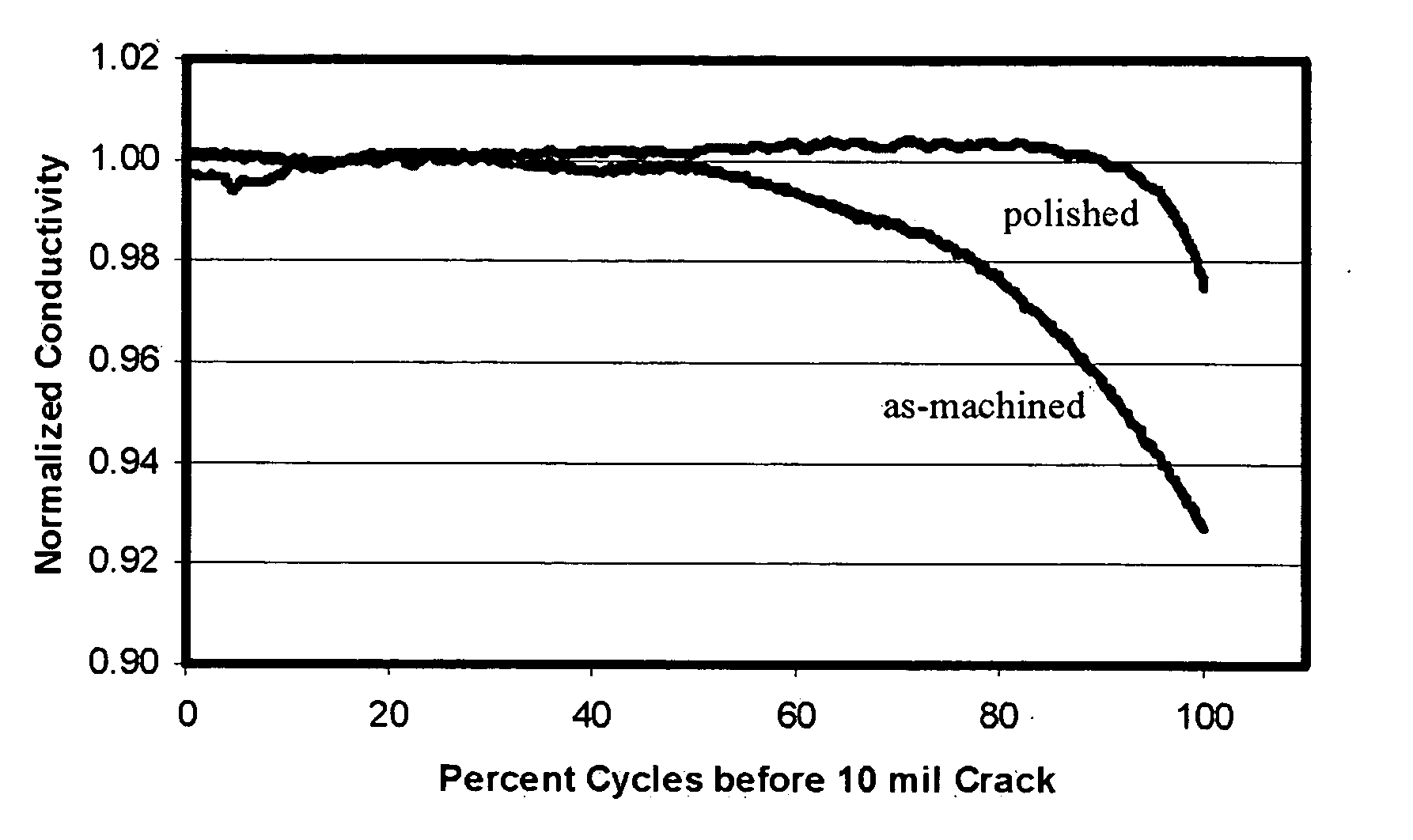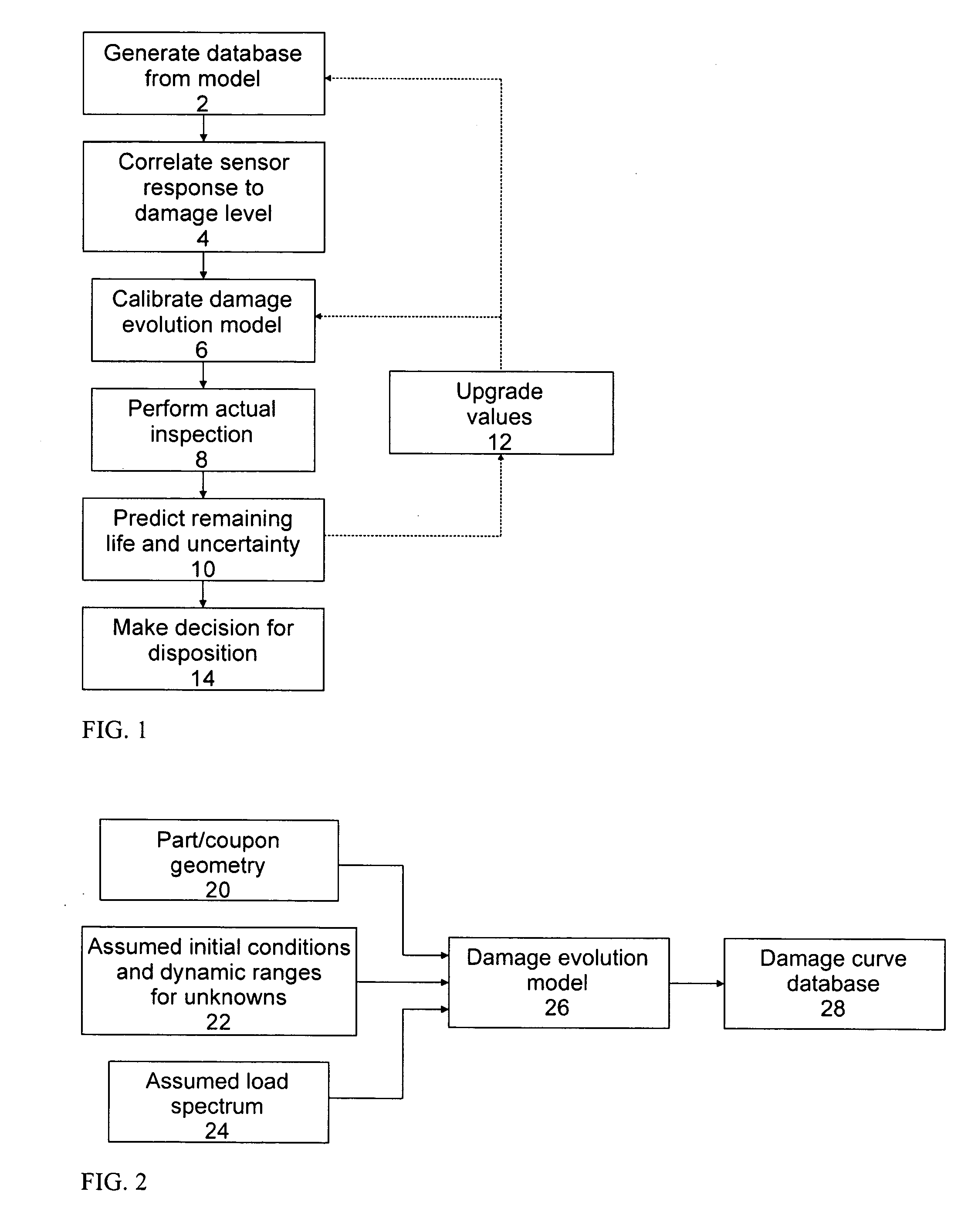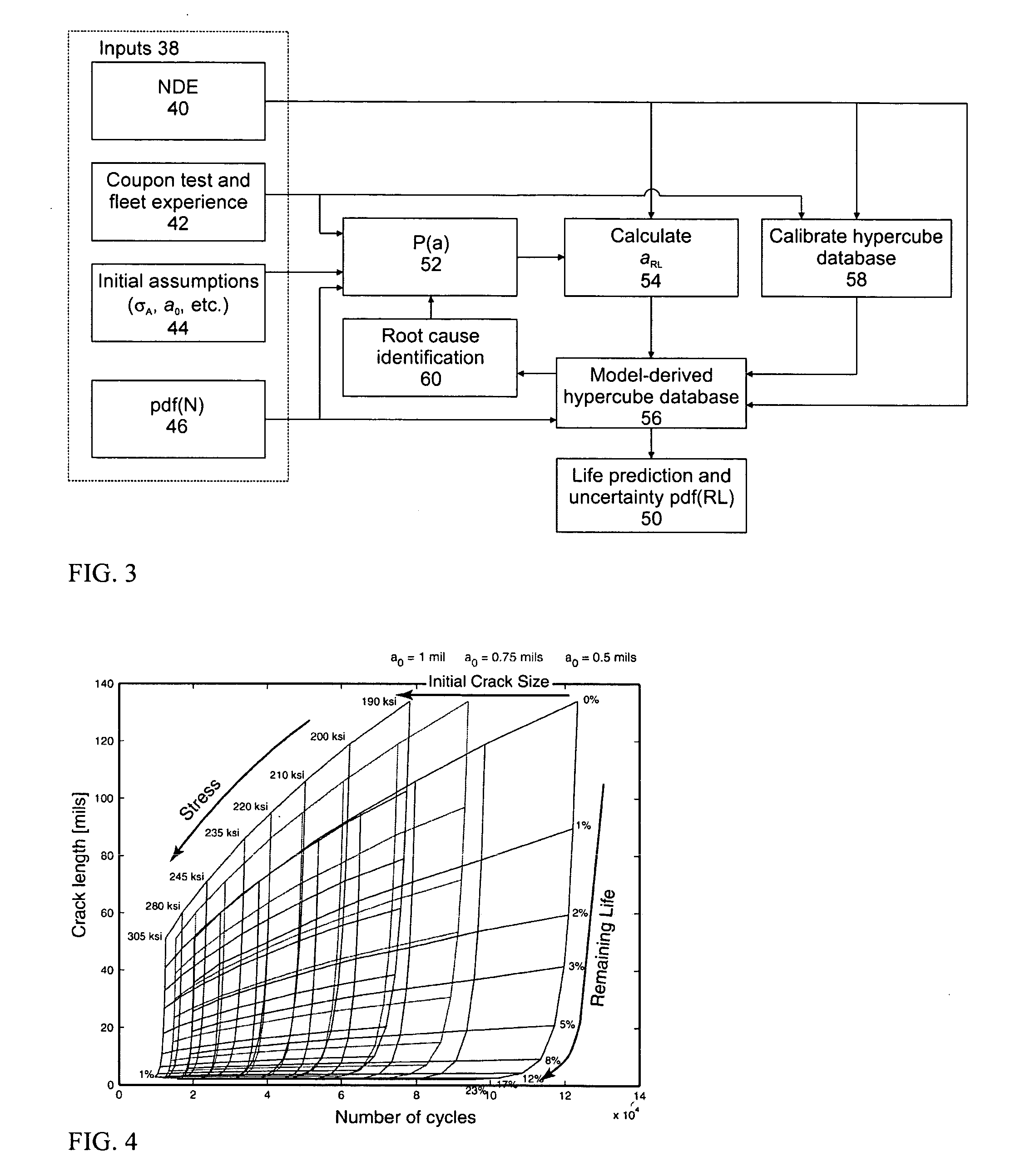Remaining life prediction for individual components from sparse data
a life prediction and sparse data technology, applied in the field of life cycle management, can solve the problems of difficult to predict damage evolution behavior, difficult and insufficient time-consuming calculation of uncertainties in sufficient time to support interactive decisions of owners
- Summary
- Abstract
- Description
- Claims
- Application Information
AI Technical Summary
Benefits of technology
Problems solved by technology
Method used
Image
Examples
Embodiment Construction
[0036] A description of preferred embodiments of the invention follows. The disclosed invention addresses the need for remaining life prediction, root cause identification and rapid uncertainty estimation tools for individual aircraft, fleets of aircraft, aircraft components and populations and subpopulations of aircraft components. In one embodiment, this tool incorporates early stage damage detection data, which is typically relatively sparse, precomputed databases of damage evolution modeled responses, and calibration of the model based on both the sparse in-service data and laboratory data, to provide rapid predictions for damage evolution and for identification of root causes for the observed damage evolution behaviors. While the following focus is on aircraft, the approach is suitable for other systems where the behavior is nonlinear and a model can be used to predict the future behavior for the system, but only limited or sparse data is available. Furthermore, this invention ...
PUM
 Login to View More
Login to View More Abstract
Description
Claims
Application Information
 Login to View More
Login to View More - R&D
- Intellectual Property
- Life Sciences
- Materials
- Tech Scout
- Unparalleled Data Quality
- Higher Quality Content
- 60% Fewer Hallucinations
Browse by: Latest US Patents, China's latest patents, Technical Efficacy Thesaurus, Application Domain, Technology Topic, Popular Technical Reports.
© 2025 PatSnap. All rights reserved.Legal|Privacy policy|Modern Slavery Act Transparency Statement|Sitemap|About US| Contact US: help@patsnap.com



